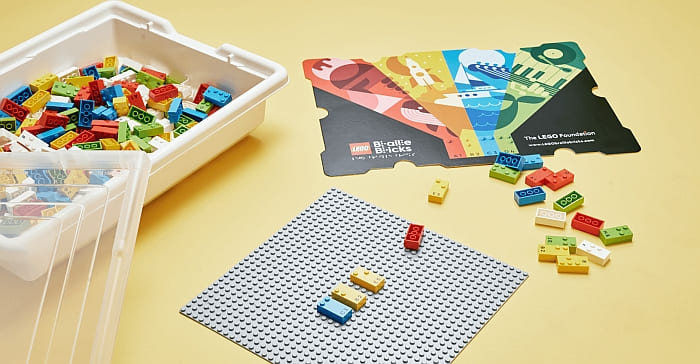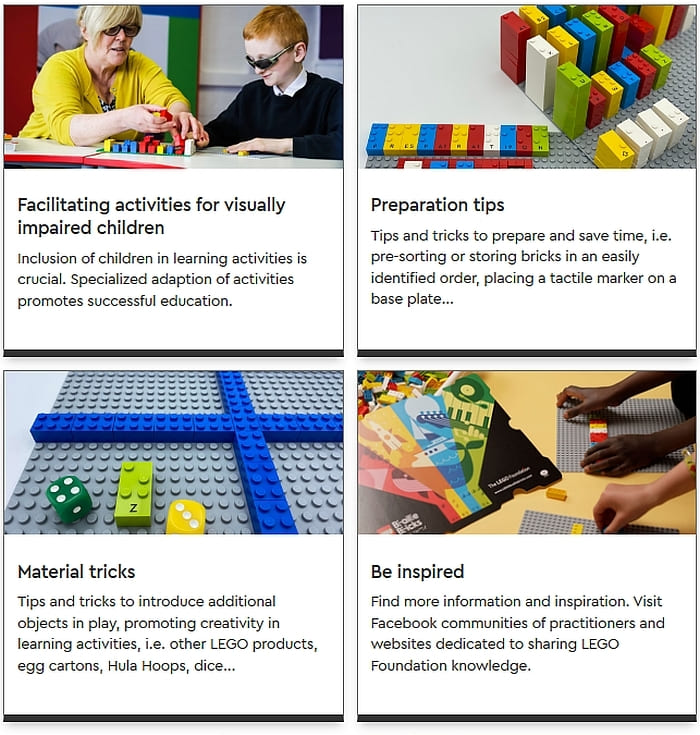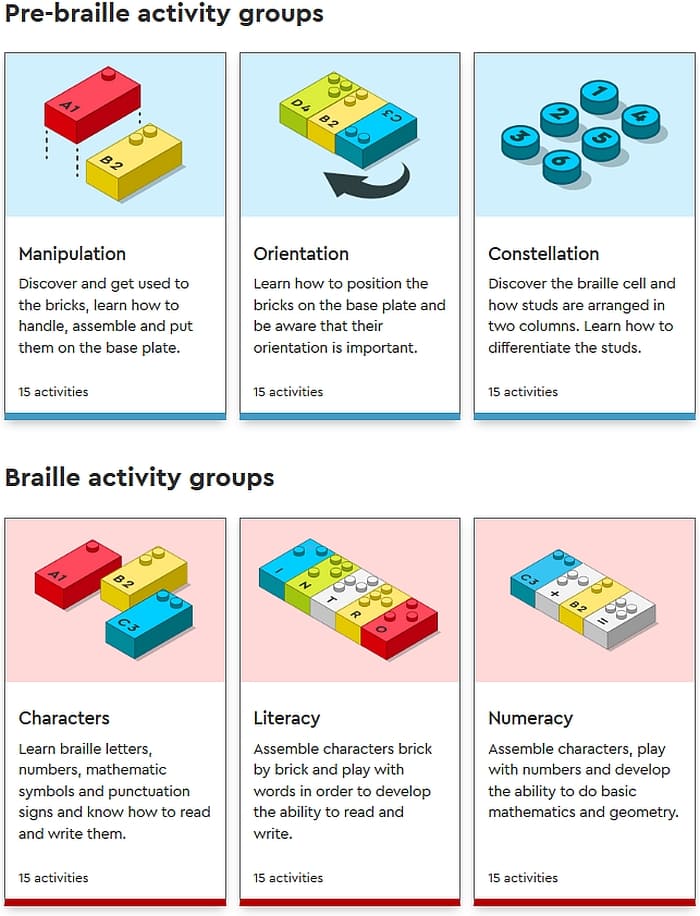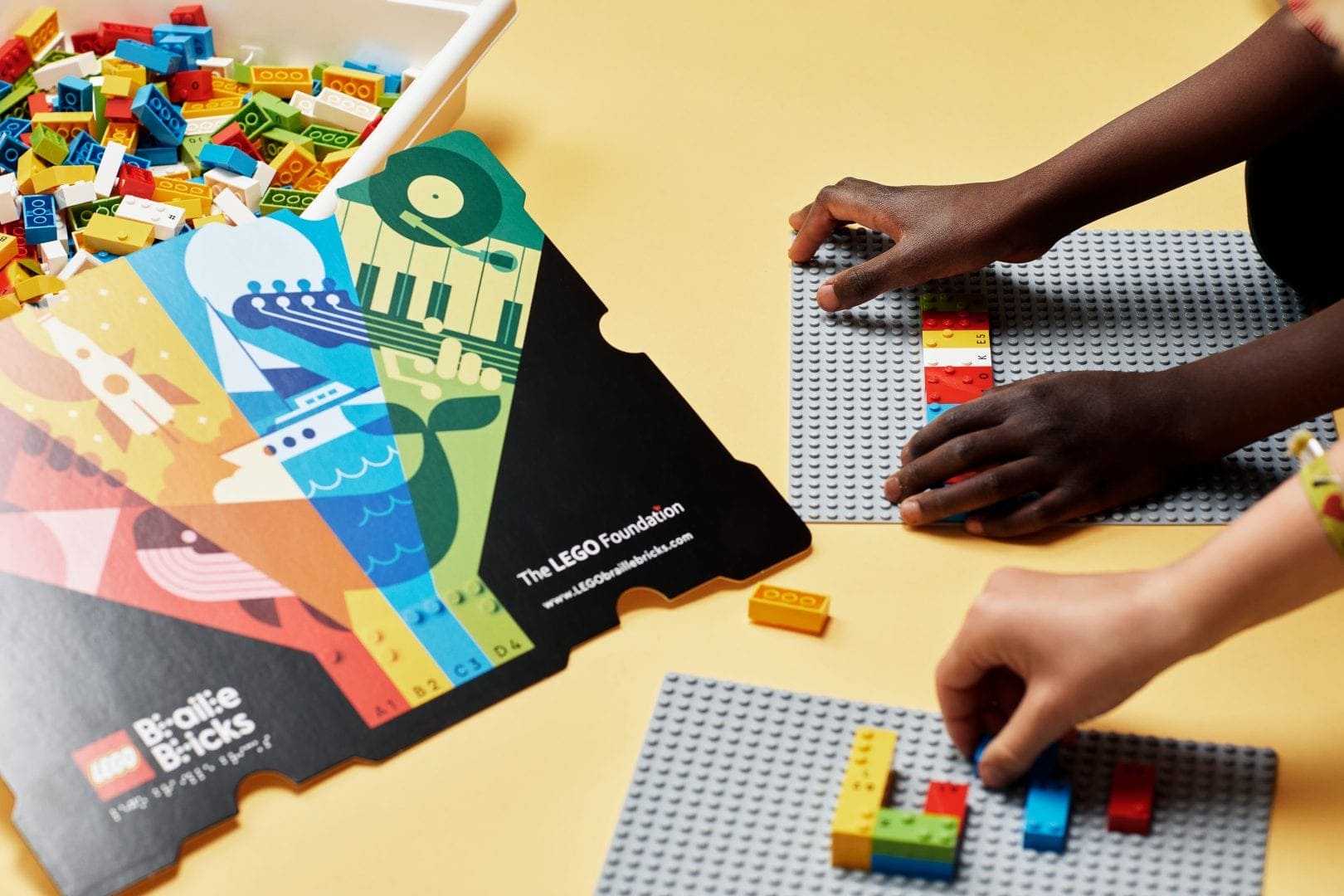You might remember from last year’s press-release (see: LEGO Braille Bricks for Visually Impaired Kids) that the LEGO Foundation and the LEGO Group teamed up with associations of the blind and visually impaired to introduce a new product called LEGO Braille Bricks. The concept was first proposed to the LEGO Foundation in 2011 by the Danish Association of the Blind and again in 2017 by the Brazilian-based Dorina Nowill Foundation for the Blind. It has since been further shaped in close collaboration among blind associations from Denmark, Brazil, UK, and Norway. The LEGO Braille Bricks toolkit features 2×4 bricks with studs that are laid out like the classic Braille raised dots, and are now available free of charge to various institutions. Below are the details.

The LEGO Braille Bricks concept is a play-based methodology that teaches Braille to children who are blind or have a visual impairment. Each brick in the LEGO Braille Bricks toolkit retains its iconic form, but unlike a regular LEGO brick, the studs are arranged to correspond to numbers and letters in the Braille alphabet. Each brick shows the printed version of the symbol or letter, allowing sighted and blind children to play and learn together on equal terms. This ingenious combination of features opens up a whole new world of playful learning that teaches children Braille in an enjoyable and tactile environment.

The LEGO Braille Bricks toolkits are distributed free of charge to select institutions, schools and services catering to the education of blind and visually impaired children. In each country where LEGO Braille Brick is launched, the LEGO Foundation works with an official partner in the blind community. This partner handles both distribution of the toolkits and support localization and training of the teaching concept presented at the LEGO Braille Brick website.

The LEGO Braille Bricks toolkit contains a minimum of 300 bricks in five LEGO colors, three baseplates on which to work, and a brick-separator. In addition, the box cover contains a helpful overview of the alphabet and symbols in the particular national Braille language. The five signature LEGO colors are randomly used for the bricks – only math symbols are all white.
To get access to the LEGO Braille Bricks toolkits, you must be eligible to receive it. For more information, you can contact the official partner in your country listed at the LEGO Braille Brick website. Should your country not be mentioned on the list, then LEGO Braille Bricks cannot be provided to you at this point in time. The LEGO Foundation and the LEGO Group plan to introduce LEGO Braille Bricks in more countries in the years to come, so stay tuned for more information at LEGOBrailleBricks.com.

What do you think? How do you like the idea of LEGO Braille Bricks? Do you know someone who could benefit from it? Would you purchase the set yourself? Feel free to share your thoughts and discuss in the comment section below!
And you might also like to check out the following related posts:












So these will never be available to the general public? I would love to gift this to a friend of mine with a blind child.
You might mention this, so he/ she could possibly find a way to order it, personally…
Schools for the blind can request it, so yes, if the child is in school, they could get it for the class.
My understanding is that they may increase availability based on demand. So, give them some time. And if your friend’s child is in an educational program for the blind, they can request the set for the school.
They could make this available on the Lego Education site so people can buy it.
I have a niece who is legally blind. She would love to play with this. I hope they make it available to the public.
I’m surprised they haven’t thought of this before. It’s such an obvious choice. Anyway, it seems like a great initiative, and kudos to them for making it available for free.
Just another reason LEGO’s are so awesome!
This is a wonderful initiative. I hope they will be able to make it more widely available in the future.
Would be more helpful if they were made available to all visually impaired people due to a lack of braille trainers / tutors and also visually impaired parents so they can play a vital role in their sighted and visually impaired children’s education, a lot of UK children do not have equal access to services for the visually impaired. These can’t be accessed easily if they aren’t registered sight impaired and mainstream prefer to use technology not braille as it means less training and expense for them.
Annette, good points. I do hope that the set will be available wider in the future. This is a pilot program by LEGO Foundation, so it’s a first for them to do something like this.